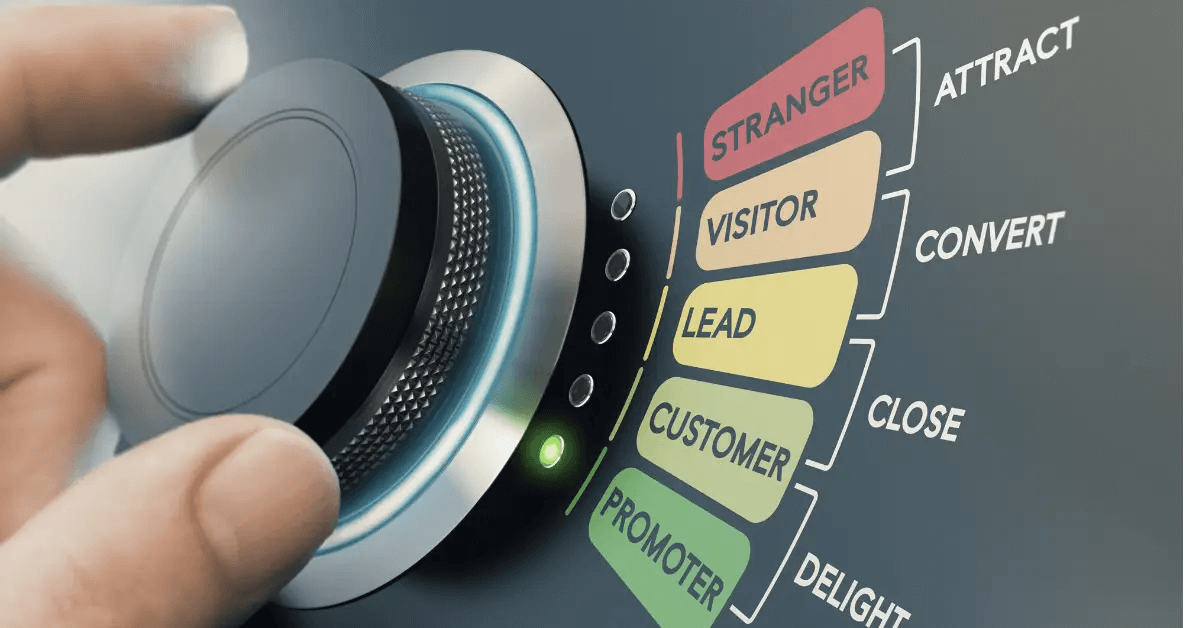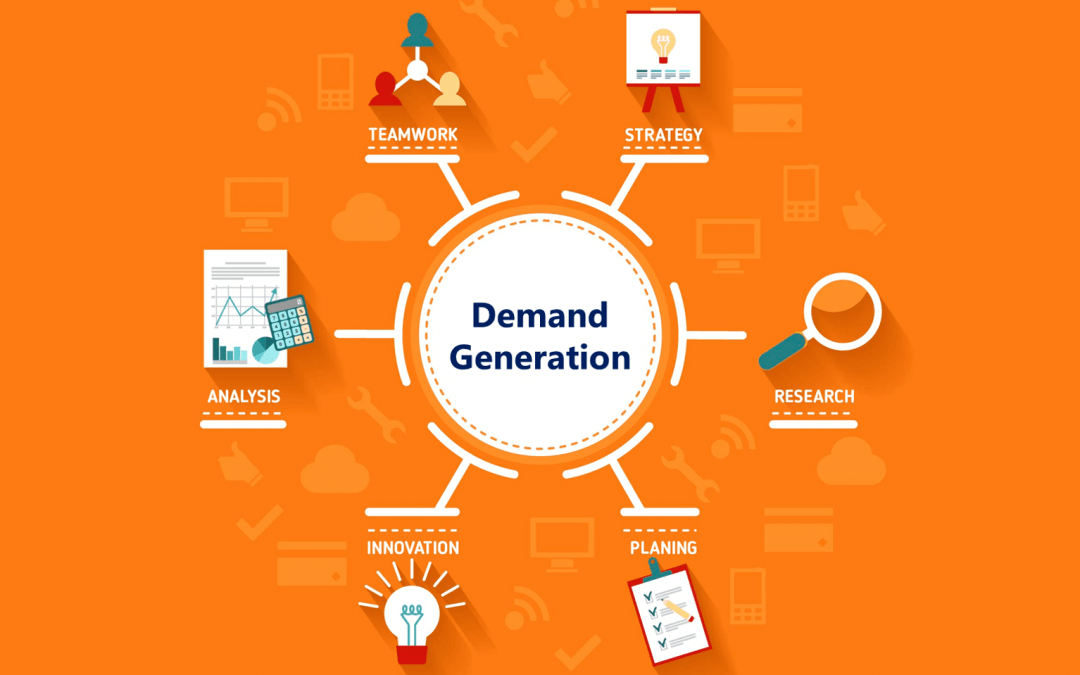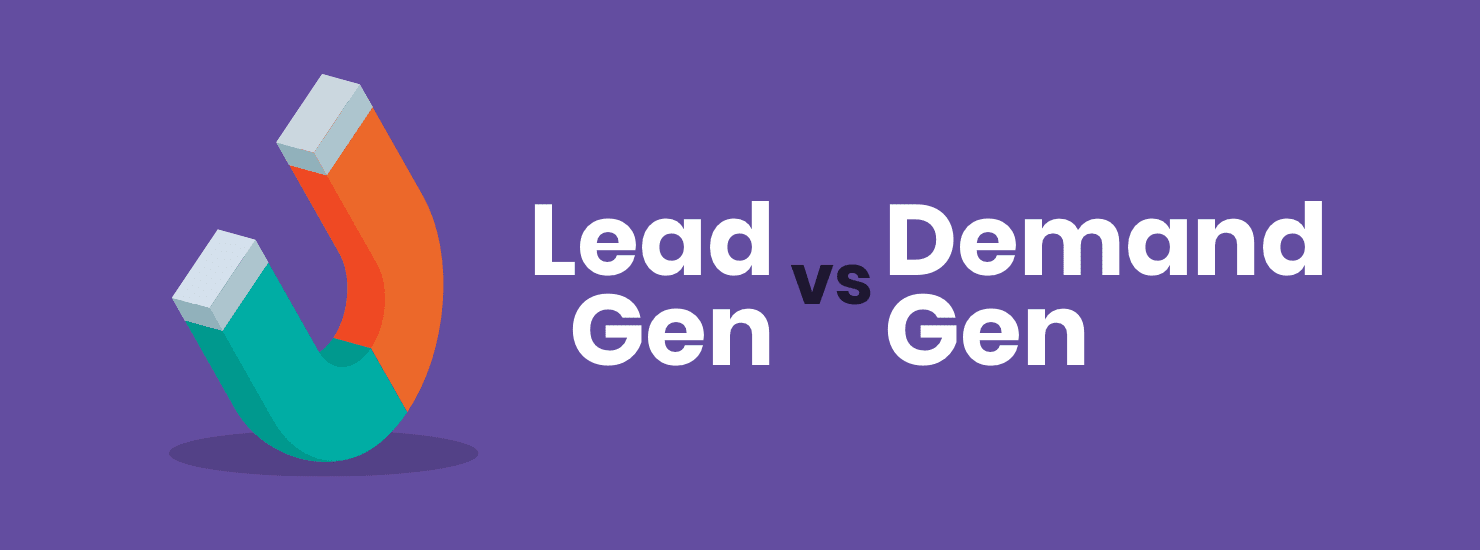| Summary |
| The value of demand generation marketing lies in its ability to raise consumer awareness of your brand, drive more visitors to your website, and generate new sales leads. Silos between sales and marketing departments may be broken down by using this tool. So, if you want to build a solid client base, take the time to go through the information in this post. To generate demand, a company must consider the whole customer experience, from the anonymous visitor to the satisfied client and everything in between. You may expand your company’s reach if you are well-versed in this knowledge. |
To succeed in marketing your company, you need to make your target audience enthusiastic about what you have to offer. It becomes clear that even the most advanced SEO methods can only go so far for marketing teams as they become older and more experienced. Curiosity must be converted into revenue. So, let us answer the question, “What is demand generation?”
Understanding Demand Generation
When it comes to demand generation, it’s all about creating a desire for a company’s goods or services. As part of a long-term, comprehensive, and holistic approach, marketing departments are typically involved in this effort.
A funnel conceptualizes both demand generation and conversion processes. Before shepherding prospects through a funnel that addresses each step of the conversion process, demand generation starts by discovering target audiences who are responsive to a brand’s marketing content.
However, unlike inbound marketing or conventional conversion channels, demand generation connects marketing and sales to achieve these objectives.
Foundations of Generation Demand

The three main pillars of demand generation are the following:
1. Generating new customers
You need leads to present your approach before going to the next level. Lead generation is attracting new clients and adding them to your database. These leads may then be passed over to sales development to move them through the demand generation funnel.
2. Capturing the demand
You can capture market demand and direct prospective buyers to your goods and services. This includes PPC ads, SEO improvements, and 3rd party intent data.
3. Pipeline speed
You may accelerate the sales process once you’ve successfully generated or captured demand as opportunities. Creating highly targeted content that matches your leads’ pain points and is relevant to their place in the sales funnel might be one of these easy actions. Field marketing events are a popular choice to accelerate pipelines.
Stages in Demand Generation
Because demand generation is so broad, determining where to begin may be difficult. So, these are the phases for demand creation.
1. Identifying end goals
If you’re planning a demand generation campaign, it’s good to begin towards the end. And it is about knowing what your campaign’s ultimate aim is. So, in understanding, you can design your approach around it.
Working backward from your booking revenue targets, you may figure out the number of opportunities you’ll need. And how many marketing initiatives you’ll have to run to get those leads will be determined by that.
2. Knowing your audience
Before deciding on the specifics of the programs, you must first identify your intended audience. Marketing to the right people is easier when you have a clear idea of who you’re trying to reach and what they want.
You may create personas based on your target audience’s responsibilities, requirements, and ambitions. Even better is to offer as many specifics as you can
3. Planning and producing content
Plan and create content for each level of the marketing funnel after your objectives and target audience have been established. It is important to offer “light” thought leadership material at the top of the funnel to raise brand recognition, emphasize a need, and stimulate the interest of potential customers.
You may use several tools to educate buyers on the difficulties they encounter and help them overcome them, such as whitepapers, purchasing guides, analyst reports, and ROI calculators. Your company-specific material, such as case studies and third-party evaluations, will be sent to the bottom of the funnel to reaffirm that your product is the best option.
4. Disseminating content
Producing high-quality material is critical. Yet, you must also be mindful of the most efficient means of distributing your message. Email, social media, direct mail, and even live events will all play a role in delivering and guiding your prospects to the correct material.
As the funnel progresses, so will the technique of distribution used. Most of your efforts will be focused on retargeting, social media, and display networks. At the bottom of the funnel, you’ll use sponsored search and email to get a direct response and convert leads.
5. Tracking of performance
If you don’t track everything your programs do, you won’t know how well they work. Aside from beginning your campaign by determining your ultimate objectives, you must also identify and monitor your KPIs or key performance indicators. As a result, this will help you know whether your demand creation campaign is successful,
In addition to the program cost, new targets, and cost-per-target, this contains analytics on how many chances your campaign has created and how much you can credit to your campaign’s success.
Marketers’ eagerness to demonstrate the success of their efforts is one of the main reasons analytics and operations are two of the rapidly growing sectors in marketing. Your ROI may be simply shown by knowing what KPIs to monitor and having the reporting infrastructure to track them.
Explanation of Demand Generation Marketing
Demand generation marketing aims to ensure that your sales team has a steady supply of leads to work with. The first step is to acquire your target audience to sign up for your mailing list by running early campaigns. Your audience will be encouraged to interact with the stuff you have to offer and attend your upcoming events by this.
To further answer what is demand generation marketing, it aims to keep your brand at the forefront of potential customer’s minds. As they go through the buying process, your aim is to turn them into qualified leads. You can turn them into a fresh client with the proper sales presentation.
Importance of Demand Generation
Demand generation is identical to attraction marketing in that it gets buyers interested in your business. However, it may serve various purposes instead of depending entirely on feelings.
Boost the popularity of your company’s name
Enterprise demand generation initiatives are awareness generators that don’t only drive visits to your website. Well-executed inbound marketing strategies let your brand stand out to consumers who may not yet require your goods.
However, when customers repeatedly encounter your brand in thought leadership postings, on stage at industry conferences, digital marketing, or demand generation programs, it creates trust and awareness. Your demand creation plan will immediately generate waves, attracting engaged and interested visitors to your website.
Attract more leads
A well-executed demand generation strategy generates a significant increase in leads, although its emphasis is broader than lead generation.
If done successfully, demand gen feeds the top of the demand generation funnel with a stream of fresh perspective leads. There is a chance that a portion of them may result in high-quality leads for your business right away. On the other hand, lead nurturing might take months or even years, depending on your company and product.
Raise profits
More qualified leads equal more income. Online demand generation is a short-term and long-term income strategy. You can anticipate benefits within a few months and over the long term as you create your pipeline, nurture it, and establish a comfortable, constant connection with your audience.
Demand Generation vs. Lead Generation
There is a significant difference between demand generation and the standard lead generation process. Some companies will take any leads, regardless of whether they meet the criteria for being considered a lead or not.
Someone who only views a website, for example, could be considered a lead to specific organizations. This is particularly true of enterprises that depend on high-volume cold-calling to develop new businesses – imagine those nasty companies who phone you up to try to sell you steak knives.
However, demand generation identifies prospective prospects based on their first actions. It puts them through a nurturing process to supply sales teams with considerably better quality, legitimately qualified leads. This leads to improved dialogues between sales professionals and prospects and – of course – more excellent conversion rates and more sales.
Explaining B2B demand Generation
B2B demand generation is an integrated marketing technique to build awareness and demand for a product or service in the B2B industry. Marketing teams concentrate on producing leads for the sales team, resulting in new possibilities. There are a lot of marketing channels being worked on at the same time to get the most significant results possible.
Marketing teams may operate on many channels since distinct divisions in the team will have different goals. Three of the most typical combinations of players on a team are listed below.
- Global campaigns team
- Field marketing team
- Social media team
Every member of your company’s marketing team pitches in to get the word out about your goods and services.
3 Best Demand Generation Tactics
So, as a brand owner, how can you apply generation demand? Here are the three best demand generation tactics you can start employing right now.
1. Offer Your Finest Work
Whether it’s a content download, a free giveaway, or another promotional campaign, be sure to only give away your absolute finest material. Although this can seem paradoxical, frequently delivering freebies of actual worth offers various advantages.
Firstly, it establishes trust between your audience and your brand, which means they’re more inclined to return to your content or website.
Another benefit is that it enhances the company’s brand’s image, leading to exciting prospects advocating on behalf of its brand and becoming the elusive “brand ambassadors.”
Lastly, by delivering something of actual value, your visitors are far more likely to give over whatever information you need to begin classifying them as prospective leads.
2. Utilize Facebook’s Lookalike Audiences feature
You should consider advertising on Facebook if you haven’t already. Additionally, lookalike audiences, one of the platform’s most effective targeting tactics, are an excellent way to generate demand.
Doppelganger audiences have previously demonstrated an interest in your goods, services, or content based on demographic and behavioral similarities.
You can effectively increase the reach of your Facebook advertising efforts using lookalike audiences by utilizing the massive portion of data Facebook has on its users. The greater the custom audience you submit, the more broadly you can cast your net using lookalikes.
This targeting function is one of your most effective demand generation tactics, and you should begin utilizing it immediately, given how much time consumers spend on Facebook.
3. Employ Managed Placements in Advertising Campaigns
By choosing where the advertisements appear and who sees them, Managed Placements give advertisers control over their reach. It may ensure that only those exposed to them are more likely to react favorably. Think of them as a more tailored approach to display rather than the more scattershot approach of ordinary display advertisements.
Due to their ability to raise awareness of a brand, display advertising may be a highly effective part of a broader demand generation campaign. Conversions may be aided by display advertising by raising consumer knowledge of the brand and encouraging repeat purchases. Managed Placements allow you better control over who sees your advertising, which may boost their efficacy.
Conclusion
Indeed, a well-designed demand generation program raises the visibility of a company’s brand and establishes its authority while generating intelligent, engaging content that creates attention and leads. Demand generation is an integral aspect of a solid business-to-business (B2B) sales and marketing strategy.
Growing income requires an intentional content strategy that focuses on increasing brand recognition, generating leads, and encouraging user interaction. Your company’s growth will be aided by an effective demand generation plan that brings in a steady stream of high-quality leads.







